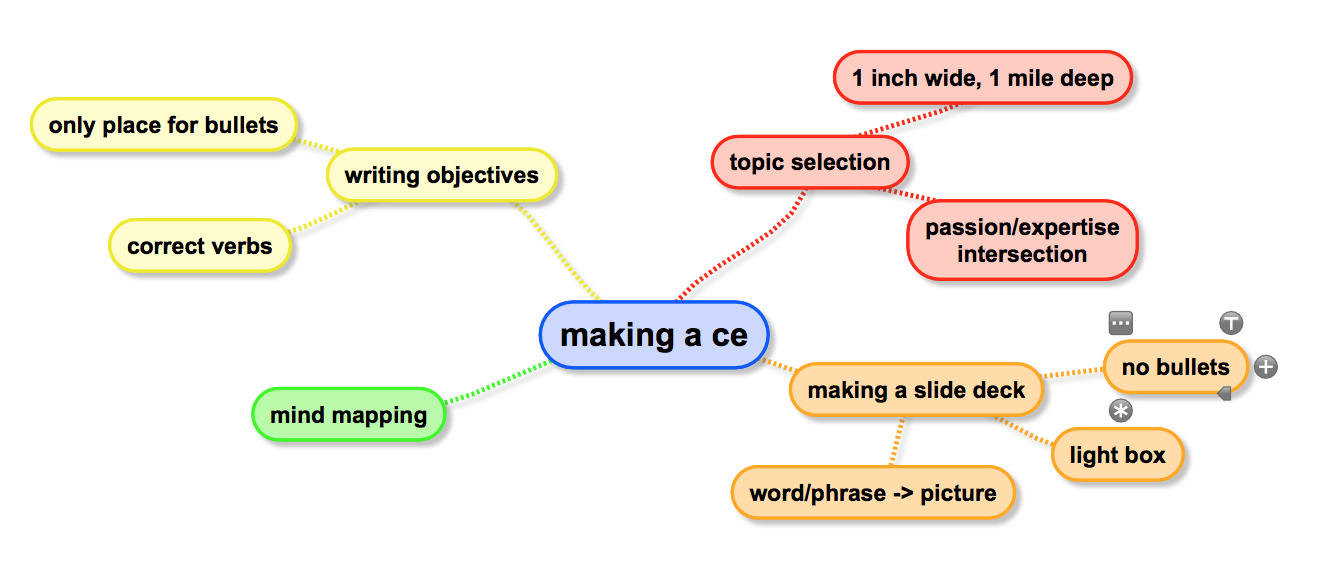In this episode, I’ll describe the steps that I follow to create knowledge-based in-services or continuing pharmacy education lectures.
ACPE says this about knowledge-based education activities:
These CPE activities are primarily constructed to transmit knowledge (i.e., facts). The facts must be based on evidence as accepted in the literature by the health care professions. The minimum amount of credit for these activities is 15 minutes or 0.25 contact hour.
Topic selection
ACPE prefers that a “needs assessment” is performed before selecting a topic. The needs assessment may be a formal survey, or it may be as simple as “a lot of people said at the staff meeting they didn’t feel comfortable responding to code blues.” The point is that putting some thought into the need for education on the topic will result in a more meaningful and appropriate continuing education activity.
Often you will be assigned or requested to speak on a specific topic. Other times you will be able to select the topic. In my experience, the easiest continuing education presentations to prepare and deliver are those that intersect the needs of the audience with something you are both passionate about and have expertise in.
The phrase “Go 1 inch wide and 1 mile deep” can be loosely applied to selecting a topic for a CE activity. Many knowledge-based continuing education activities are designed to be a 45-minute activity with a 15-minute question & answer period. While 45 minutes is not long enough to go “1 mile deep” on any topic, the general principle applies: Choose a narrow topic and explain it in depth, rather than a broad topic with superficial depth. A talk about everything will be a lecture about nothing.
Writing objectives
Most of my CE presentations have 3-4 objectives. There is no set number that is required. A 15 minute CE presentation may have just one objective. If you find yourself listing significantly more that 3-4 objectives, your topic is probably too broad and you should seek to narrow it.
ACPE has specific requirements for how objectives are phrased. If the wrong verbs are used the activity will be denied accreditation by an ACPE provider.
Verbs to avoid
Avoid using verbs that are vague or open-ended when phrasing your objectives:
Appreciate
Behave
Believe
Be aware of
Enjoy
Explore
Grasp significance of
Have faith in
Know
Learn
Perceive
Realize
Understand
Verbs to use
Instead, use specific verbs that are on the ACPE list of approved words:
Arrange
Define
Duplicate
Label
List
Memorize
Name
Order
Recognize
Relate
Recall
Repeat
Reproduce
State
Classify
Describe
Discuss
Explain
Express
Identify
Indicate
Locate
Outline
Recognize
Report
Restate
Review
Select
Translate
Tufts School of Medicine has a comprehensive verb worksheet with many more acceptable verbs for objectives that you can use if you are struggling to find the right word.
After choosing your topic and objectives, it is time to start planning out and developing the CE presentation. To do this, I use a method called mind mapping. From Wikipedia:
A mind map is a diagram used to visually organize information. A mind map is hierarchical and shows relationships among pieces of the whole. It is often created around a single concept, drawn as an image in the center of a blank page, to which associated representations of ideas such as images, words and parts of words are added. Major ideas are connected directly to the central concept, and other ideas branch out from those.
I find that mind mapping is a great method to use to brainstorm ideas for a presentation. I can quickly build a skeleton for the presentation using the mind map, and then come back to each point and add more detail as I think about the presentation more.
Here is the mind map I used to start this blog post:
Making a slide deck
After the presentation has been mind mapped, I create the slide deck. When making the slides I use several techniques to make sure that the audience is focused on what I want them to be focused on. Perhaps the most important improvement I have made in creating slides is to stop using bullet points.
Bullets kill people, so why do you have them in your presentation? I don’t want to lose my audience or have them read ahead and not focus on what I am saying, or have them wish I would have just emailed them the slides to save them time. For this reason, the only slide I will allow bullet points in is the objectives slide. On the other slides, I will place a word or short phrase that reminds me of a point I want to make. Often I will place a picture on the slide rather than a word or phrase and tell a story or make a point while the picture is on the screen. I will also use a lightbox effect to direct attention to a specific area on the slides. This helps the audience focus on what I am saying. Place as many bullet points as you want in the speaker’s notes – just not on the slides!
You can download the slide deck for a recent presentation I did on pharmacist’s responding to medical emergencies inside the free pharmacy nation community by clicking here.
If you like this post, check out my book – A Pharmacist’s Guide to Inpatient Medical Emergencies: How to respond to code blue, rapid response calls, and other medical emergencies.

Leave a Reply